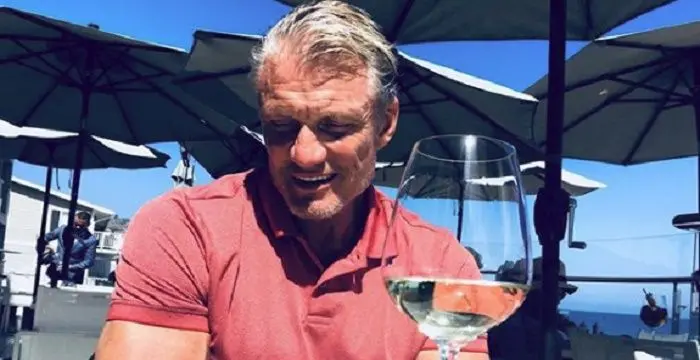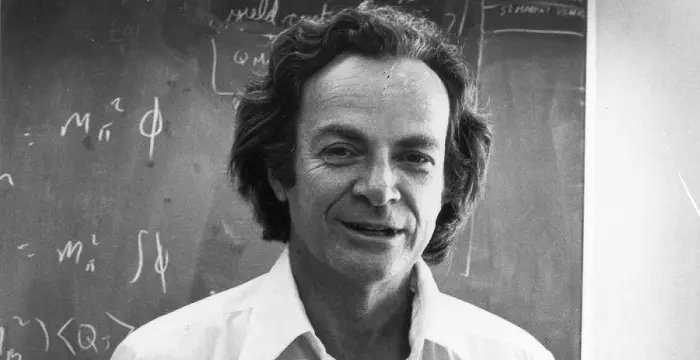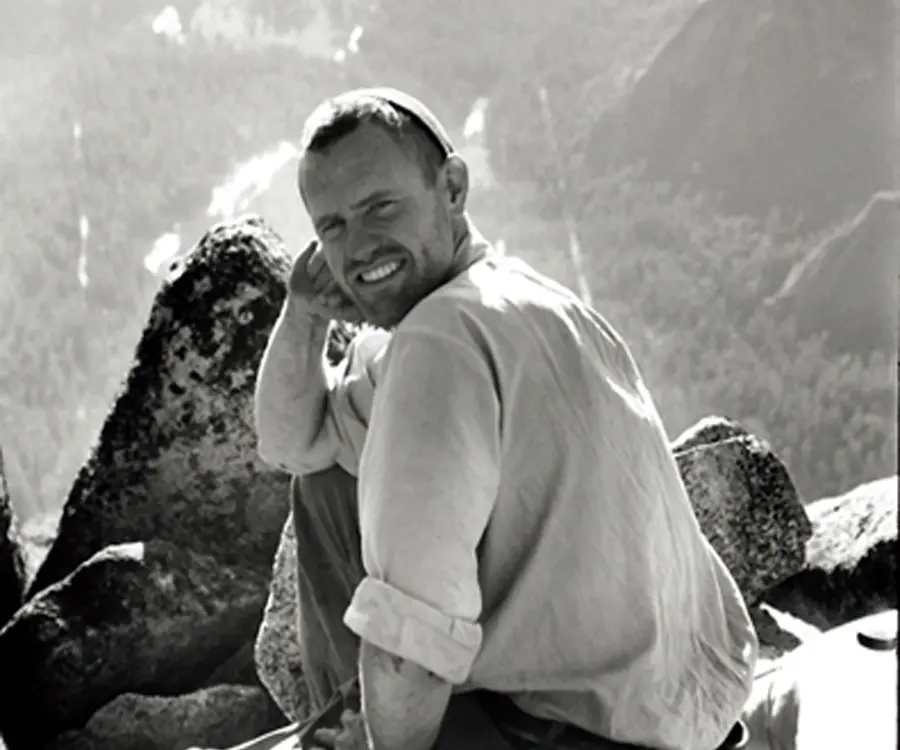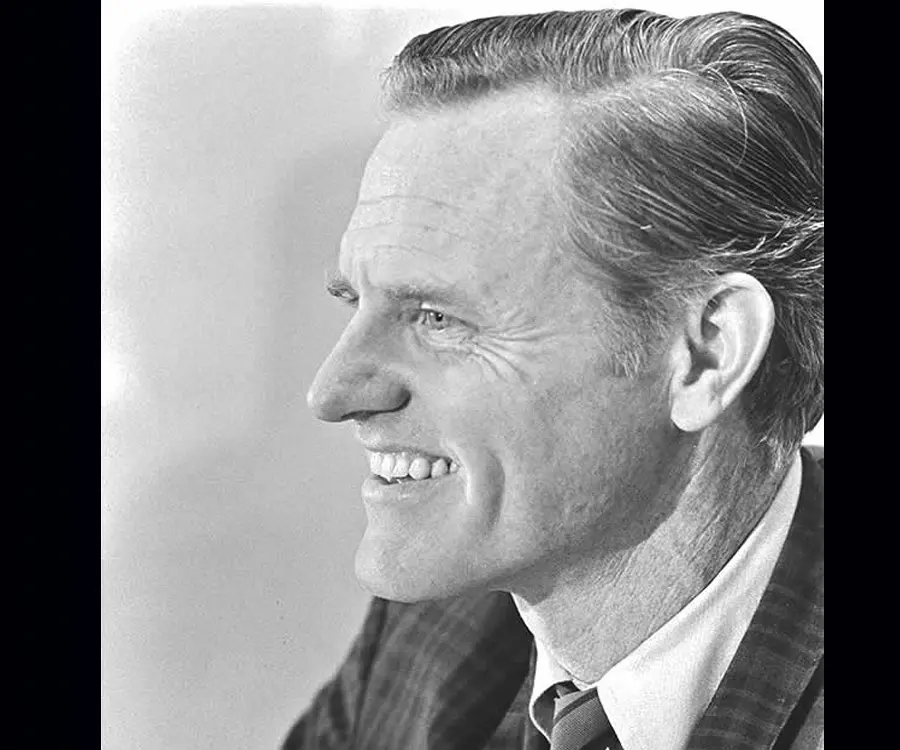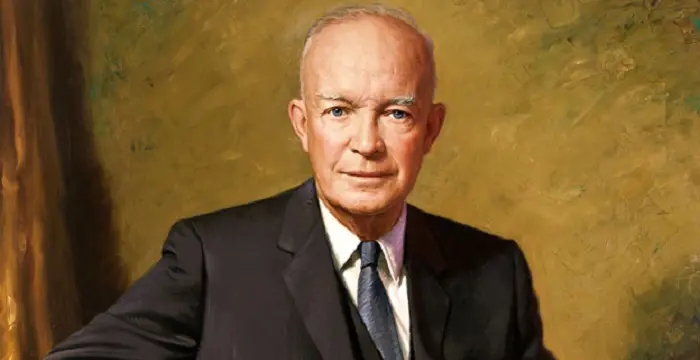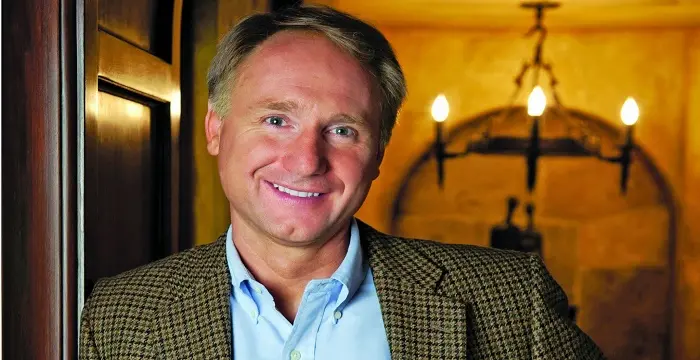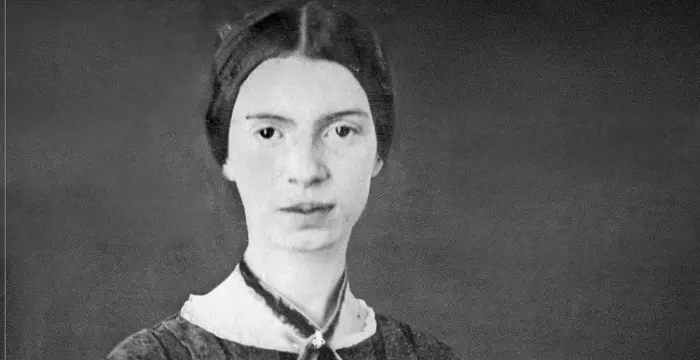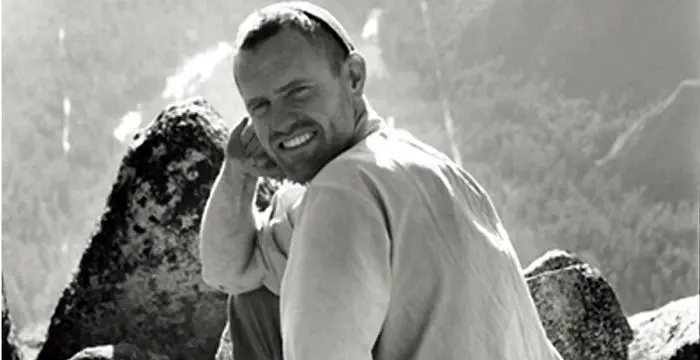
Henry Way Kendall - Amherst College, Birthday and Childhood
Henry Way Kendall's Personal Details
Henry Way Kendall (1926–1999) was a leading American physicist
| Information | Detail |
|---|---|
| Birthday | December 9, 1926 |
| Died on | February 15, 1999 |
| Nationality | American |
| Famous | Amherst College, Massachusetts Institute Of Technology, Scientists, Physicists |
| Universities |
|
| Notable Alumnis |
|
| Founder / Co-Founder |
|
| Cause of death |
|
| Birth Place | Boston, Massachusetts, US |
| Gender | Male |
| Sun Sign | Sagittarius |
| Born in | Boston, Massachusetts, US |
| Famous as | Physicist |
| Died at Age | 72 |
// Famous Massachusetts Institute Of Technology
Dolph Lundgren
Dolph Lundgren is a famous Swedish actor, film-maker, screenwriter and martial artist. This biography offers detailed information about his childhood, family, personal life, etc.
Joseph E. Stiglitz
Joseph E. Stiglitz is a Nobel Prize winning American economist. Check out this biography to know about his childhood, family life, achievements and other facts related to his life.
Richard Feynman
Richard Feynman was a Nobel Prize winning American physicist who proposed the theory of quantum electrodynamics. To know more about his childhood, career, profile and timeline read on
Henry Way Kendall's photo
Who is Henry Way Kendall?
Henry Way Kendall (1926–1999) was a leading American physicist. He was awarded the Nobel Prize in Physics in 1990, along with his colleagues Jerome Friedman and Richard Taylor, “for their pioneering investigations concerning deep inelastic scattering of electrons on protons and bound neutrons, which have been of essential importance for the development of the quark model in particle physics." He was the J. A. Stratton Professor of Physics at MIT. Along with his engaged in research and teaching, Kendall was also active in writing, analysis, and public activities related to U.S. energy and defense matters and global issues of environmental pressures, arms control, resource management, population growth, and climate change. A founder and leader of the Union of Concerned Scientists, he was active and highly influential in areas related to energy, defense, and the environment. Recognized for his broad scientific knowledge and engagement in critical issues, he was often called upon to speak, serve on panels and committees, and testify in government hearings. In addition to his extensive scientific and advocacy work, Henry W. Kendall led an active life. He participated in major mountain climbing expeditions, carrying cameras to record spectacular scenes. He did exploratory diving and made advances in underwater photography. He also took active interest in maritime history.
// Famous Physicists
Henry Cavendish
Henry Cavendish was a theoretical chemist and physicist, renowned for discovery of hydrogen and calculation of the mass of earth. To know more about his childhood, profile, timeline and career read on
Walter Kohn
Nobel Laureate Walter Kohn was an Austrian-born American theoretical chemist and physicist. Check out this biography to know about his childhood, life, achievements, works & timeline.
Nikola Tesla
Nikola Tesla was a Serbian-American inventor, best known for his development of alternating current electrical systems. This biography of Nikola Tesla provides detailed information about his childhood, life, achievements, works & timeline.
Childhood & Early Life
Henry was born in Boston, Massachusetts, on December 9, 1926, and grew up in nearby Sharon. He was the first of three children of Henry P. Kendall, a businessman, and Evelyn Way Kendall.
He attended Deerfield Academy, a college preparatory school. Upon graduating in 1945 he entered the U.S. Merchant Marine Academy and served on a troop transport during the winter of 1945-1946.
Thereafter he entered Amherst College, graduating with a major in mathematics in 1950, and enrolled at the Massachusetts Institute of Technology as a graduate student in physics.
He carried out his Ph.D. thesis research under the supervision of Martin Deutsch. It was an unsuccessful attempt to measure the Lamb shift in positronium.
Career
Upon receiving his degree in 1955 Henry began his postdoctoral career at MIT and Brookhaven National Laboratory, and made his first foray into innovative instrumentation.
In 1956 he took a research position at Stanford University, attracted by the program of Robert Hofstadter that was measuring the size of atomic nuclei by means of elastic electron scattering.
He remained at Stanford until returning to MIT as a faculty member in 1961, becoming a full professor in 1967 and the Julius A. Stratton Professor of Physics in 1991.
He then spent five years in Robert Hofstadter's research group at Stanford University in the late 50's and early 60's, where he worked with Jerome Friedman and Richard Taylor, studying the structure of protons and neutrons, using the university's 300 feet long linear electron accelerator. He developed a close working relationship with Wolfgang K. H. Panofsky at Stanford.
He then returned to the MIT Physics Department, where he remained for the rest of his life.
In the late 60's and early '70s, Kendall worked in collaboration with researchers at the Stanford Linear Accelerator Center (SLAC) including Friedman and Taylor. These experiments involved scattering high-energy beams of electrons from protons and deuterons and heavier nucleii. At lower energies, it had already been found that the electrons would only be scattered through low angles, consistent with the idea that the nucleons had no internal structure. However, the SLAC-MIT experiments showed that higher energy electrons could be scattered through much higher angles, with the loss of some energy. These deep inelastic scattering results provided the first experimental evidence that the protons and neutrons were made up of point-like particles, later identified to be the up and down quarks. The experiments also provided the first evidence for the existence of gluons.
In 1982 he and Friedman joined Frank Taylor in a Fermilab neutrino experiment that brought them back much closer to their deep-inelastic roots. This continued until 1988, when they joined the SLAC program of electron-positron annihilation experiments.
Henry exhibited a deep commitment to a variety of societal causes throughout his life, most of which were science and technology related. He was especially concerned by the dangers inherent in the exploitation of nuclear physics for both military and civilian ends. His first major involvement was in the 1960s, through membership in the JASON Group of the Institute for Defense Analyses. In those days the JASON Group, comprising a large number of particle physicists and a lesser number of scientists in other fields, advised the Department of Defense on a variety of military issues, concentrating on the nuclear arms race as well as the electronic barrier concept aimed to suppress guerrilla activity during the Vietnam War.
In 1969 he joined colleagues in the MIT physics department who had founded the Union of Concerned Scientists (UCS).
In 1974 UCS became a formally organized nonprofit organization, with Henry as its chair from then until his death. Under his leadership UCS grew steadily in reach and effectiveness. He was personally involved in its programs on nuclear arms control, missile defense, and renewable energy.
Kendall was not only a very accomplished physicist, but also a very skilled mountaineer and photographer. He did extensive rock climbing in Yosemite Valley, followed by expeditions to the Andes, the Himalayas and Antarctica, photographing his experiences with large format cameras.
Awards & Achievements
Henry Way Kendall shared the 1990 Nobel Prize for Physics with Jerome Isaac Friedman and Richard E. Taylor.
In addition to his membership in the National Academy of Sciences (elected in 1992), Henry Kendall was a fellow of the American Academy of Arts and Sciences, the American Physical Society, and the American Association of Arts and Sciences.
He was awarded a number of prizes in addition to the 1990 Nobel Prize. These included the Bertram Russell Society Award in 1982, the Environmental Leadership Award from the Tufts University’s Lincoln Filene Center in 1991.
Personal Life & Legacy
Henry died at the age of 72 in February 1999 in a diving accident while accompanying a National Geographic expedition in Florida.
// Famous Scientists
Juliane Koepcke
Juliane Koepcke is a German-Peruvian biologist, who was the lone survivor among the 92 passengers and crew of the ill-fated LANSA Flight 508 that crashed in the Peruvian rainforest on 24 December 1971. Know more about her life in this biography.
Henry Cavendish
Henry Cavendish was a theoretical chemist and physicist, renowned for discovery of hydrogen and calculation of the mass of earth. To know more about his childhood, profile, timeline and career read on
Konstantin Tsiolkovsky
Konstantin Tsiolkovsky was a Russian rocket scientist and a pioneer of astronautics. This biography provides detailed information about his childhood, family, personal life, career, achievements, etc.
Henry Way Kendall's awards
| Year | Name | Award |
|---|---|---|
Other | ||
| 0 | Nobel Prize in Physics (1990) | |
Henry Way Kendall biography timelines
- // 9th Dec 1926Henry was born in Boston, Massachusetts, on December 9, 1926, and grew up in nearby Sharon. He was the first of three children of Henry P. Kendall, a businessman, and Evelyn Way Kendall.
- // 1950Thereafter he entered Amherst College, graduating with a major in mathematics in 1950, and enrolled at the Massachusetts Institute of Technology as a graduate student in physics.
- // 1955Upon receiving his degree in 1955 Henry began his postdoctoral career at MIT and Brookhaven National Laboratory, and made his first foray into innovative instrumentation.
- // 1956In 1956 he took a research position at Stanford University, attracted by the program of Robert Hofstadter that was measuring the size of atomic nuclei by means of elastic electron scattering.
- // 1969In 1969 he joined colleagues in the MIT physics department who had founded the Union of Concerned Scientists (UCS).
- // 1974In 1974 UCS became a formally organized nonprofit organization, with Henry as its chair from then until his death. Under his leadership UCS grew steadily in reach and effectiveness. He was personally involved in its programs on nuclear arms control, missile defense, and renewable energy.
- // 1982 To 1988In 1982 he and Friedman joined Frank Taylor in a Fermilab neutrino experiment that brought them back much closer to their deep-inelastic roots. This continued until 1988, when they joined the SLAC program of electron-positron annihilation experiments.
- // 1990Henry Way Kendall shared the 1990 Nobel Prize for Physics with Jerome Isaac Friedman and Richard E. Taylor.
- // 1992In addition to his membership in the National Academy of Sciences (elected in 1992), Henry Kendall was a fellow of the American Academy of Arts and Sciences, the American Physical Society, and the American Association of Arts and Sciences.
- // Feb 1999Henry died at the age of 72 in February 1999 in a diving accident while accompanying a National Geographic expedition in Florida.
// Famous Amherst College
Joseph E. Stiglitz
Joseph E. Stiglitz is a Nobel Prize winning American economist. Check out this biography to know about his childhood, family life, achievements and other facts related to his life.
Dwight D. Eisenhower
Dwight D. Eisenhower was the 34th president of the United States. This biography provides detailed information about his childhood, life, achievements, works & timeline.
Dan Brown
Dan Brown is one of the most acknowledged thriller fiction writers of the age, his book ‘The Da Vinci Code’ being one of the bestsellers. Check out this biography to know more about his life, childhood & timeline.
David Suzuki
David Suzuki is a Canadian academic and science broadcaster. This biography gives detailed information about his childhood, career, personal life and timeline.
Emily Dickinson
Emily Dickinson was a well-known American poet. This biography profiles her childhood, family life, achievements, works and interesting facts.
Antonis Samaras
Antonis Samaras is a Greek politician who served as Prime Minister of Greece from 2012 to 2015. This biography of Antonis Samaras provides detailed information about his childhood, life, achievements, works & timeline.
Henry Way Kendall's FAQ
What is Henry Way Kendall birthday?
Henry Way Kendall was born at 1926-12-09
When was Henry Way Kendall died?
Henry Way Kendall was died at 1999-02-15
Where was Henry Way Kendall died?
Henry Way Kendall was died in Edward Ball Wakulla Springs State Park
Which age was Henry Way Kendall died?
Henry Way Kendall was died at age 72
Where is Henry Way Kendall's birth place?
Henry Way Kendall was born in Boston, Massachusetts, US
What is Henry Way Kendall nationalities?
Henry Way Kendall's nationalities is American
What was Henry Way Kendall universities?
Henry Way Kendall studied at Amherst College,Massachusetts Institute Of Technology (MIT), Massachusetts Institute of Technology, Amherst College, Deerfield Academy
What was Henry Way Kendall notable alumnis?
Henry Way Kendall's notable alumnis is Amherst College, Massachusetts Institute Of Technology (MIT)
Which company or organization was founded by Henry Way Kendall?
Henry Way Kendall was the founder/co-founder of Union of Concerned Scientists
What is Henry Way Kendall's cause of dead?
Henry Way Kendall dead because of Accident
What is Henry Way Kendall's sun sign?
Henry Way Kendall is Sagittarius
How famous is Henry Way Kendall?
Henry Way Kendall is famouse as Physicist
